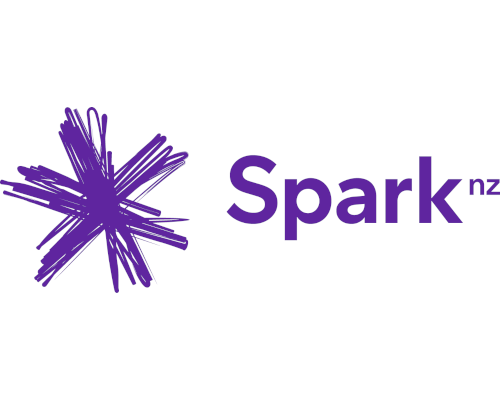Economic study dispels myths about New Zealand mobile communications industry performance
NZ industry performs well on an international basis despite difficult challenges, but industry faces difficult future investment and pricing decisions
A study by the New Zealand Institute of Economic Research (NZIER) has concluded New Zealand’s mobile communications market performs well when compared with many other countries in terms of both network coverage levels and pricing.
Spark New Zealand commissioned the New Zealand
Institute of Economic Research (NZIER) to get a clearer view
of how New Zealand’s mobile industry stacks up
internationally in the face of economic realities and rapid
technological change.
The key findings include:
·
97 percent of populated areas in New Zealand have access to
3G services – comparable to the coverage achieved in most
Western European countries (and a similar proportion will
have 4G access when the 4G rollout is completed)
· New Zealand’s low population density and difficult terrain means network coverage costs are significantly higher on a per-capita basis that many other countries
· If New Zealand applied a similar population density cut-off point for -economic coverage as the UK does, only 60 percent of New Zealanders would have mobile coverage – this means more than one-third of New Zealanders benefit from mobile coverage that would be deemed uneconomic to provide in the UK
· Despite higher coverage costs, New Zealand mobile prices are generally below international OECD averages
· Looking ahead, the industry faces difficult investment and pricing decisions to service future demand
Commenting on the report, Spark New Zealand
Managing Director Simon Moutter said: “This report dispels
the commonly held myth that New Zealand has high mobile
prices and poor network coverage.
“Despite the challenges of a small population spread widely over mountainous islands, we’re actually very well served by mobile technology. Prices stack up well against many comparable countries and we have coverage in less populated areas that simply wouldn’t exist in many other places.
“Spark is investing hundreds of millions of dollars per year to provide our customers with even better services, strengthening and expanding our mobile network, including rolling out world-class 4G services using the latest 700 MHz spectrum we recently acquired through a government auction,” Mr Moutter said.
“At the same time, consumers have been enjoying steep declines in the prices for mobile services. For instance, what you get on an entry-level Ultra Mobile $49 plan today would have cost $710 per month in 2009, while the $19 prepay value pack today would have cost $237 per month in 2009.”
The report notes the mobile industry has some difficult choices ahead. Constrained revenues, along with sharply increasing demand for mobile data, expanding coverage requirements and the huge capital investment needed to keep up with technological change are all creating a squeeze that will result in difficult trade-offs in the future.
The report describes
these trade-offs across three broad areas:
·
extent of access or coverage requiring breadth of
investment;
· capacity and speed of network requiring intensive investment in areas of high demand, and;
· prices which encourage efficient access and use and yield return on investment.
New Zealand is
experiencing huge increases in the amount of data that
customers are sending across the mobile network. In the past
four years mobile data use grew by more than 600 percent and
use is projected to grow by 50 percent per year over the
medium term, which will have to be met by more capital
investment. At the same time, New Zealand has below OECD
average revenue per connection to service that
investment.
The report also points out the greater economic challenges of mobile networks compared with fixed networks, which is why the mix and cost of services is between them will always be different. Once a fixed network (copper or fibre) is in place, the cost of new technologies that improve capacity and speeds is usually a very small increment to the original capital cost of the network.
“We’ve been concerned for some time that the apparent mismatch between expectations of the mobile networks and the unsustainable economic realities that underpin them. This report sheds light on that big challenge for New Zealand network operators,” Mr Moutter commented.
“We need a quality debate on the future direction of our mobile networks because the importance of mobile data connectivity to our country’s future economic success means it’s vital we get this right.”
ends



 Forest and Bird: Hoiho Wins Bird Of The Year 2024
Forest and Bird: Hoiho Wins Bird Of The Year 2024 FIRST Union: Future Of 75 Jobs At Auckland Pulp Mill In The Balance
FIRST Union: Future Of 75 Jobs At Auckland Pulp Mill In The Balance Plant and Food Research: Government Funding For Developing Fish Products In The Lab
Plant and Food Research: Government Funding For Developing Fish Products In The Lab Ashburton Art Gallery: Crustacean Celebrities Of Aotearoa New Zealand On Display At Ashburton Art Gallery And Museum
Ashburton Art Gallery: Crustacean Celebrities Of Aotearoa New Zealand On Display At Ashburton Art Gallery And Museum Kaikoura Dark Sky Trust: Kaikōura Dark Sky Trust Achieves Prestigious International Dark Sky Sanctuary Status
Kaikoura Dark Sky Trust: Kaikōura Dark Sky Trust Achieves Prestigious International Dark Sky Sanctuary Status REINZ: REINZ August Data - Property Market Stable As Sentiment Improves
REINZ: REINZ August Data - Property Market Stable As Sentiment Improves



